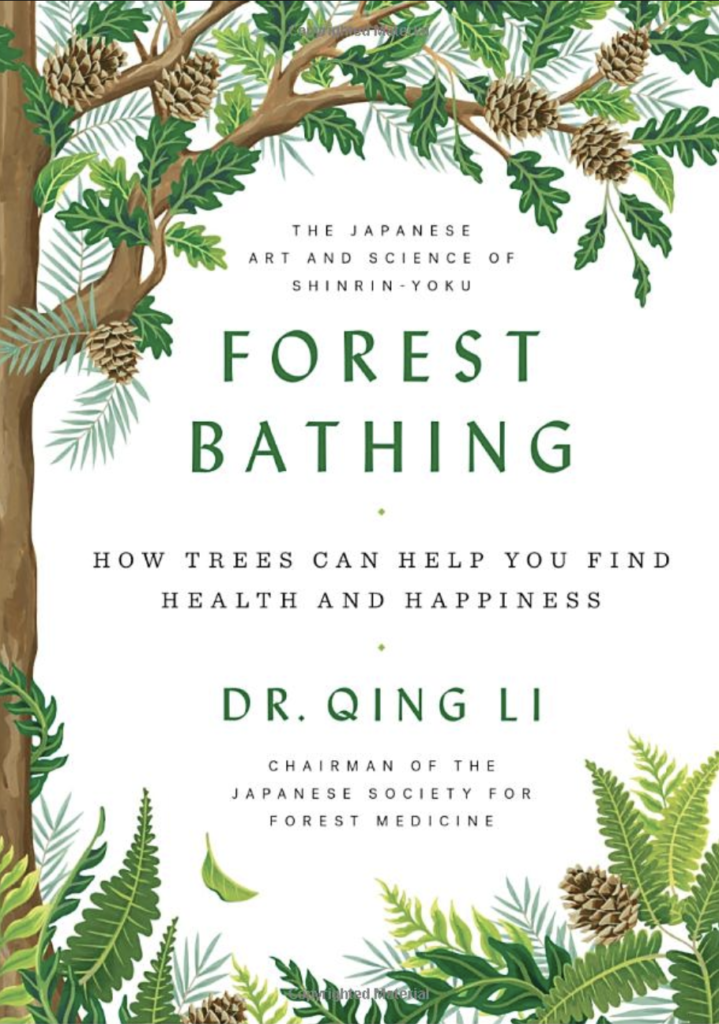Forest Bathing
Forest bathing is the act of applying mindfulness to walking in the woods. This idea is based on a Japanese concept where individuals carve out time to walk in the forest, with the intention of slowing down and observing nature around them. This practice is known to help individuals feel happier and calmer. In DBT, we build Mindfulness into our daily routine in order to help us regulate emotion and to practice being in the moment. Walking mindfully, often outside, is a common practice.
Awe is a psychological concept that has recently gained attention within the field as a way to impact our mental health. Greater Good, a science center based at UC Berkley, defines awe as “the feeling we get in the presence of something vast that challenges our understanding of the world, like looking up at millions of stars in the night sky or marveling at the birth of a child. When people feel awe, they may use other words to describe the experience, such as wonder, amazement, surprise, or transcendence.” (for more information see www.greatergood.berkeley.edu).
Awe is something that occurs for me when I can experience nature. It is a feeling of connection to a vast world beyond ourselves, a reminder of the greater world that we inhabit. For me, awe is easy to access in the forest. Thus, the idea of forest bathing just makes sense to me. I encourage you to think about what places inspire awe for you. It may be a forest, beach, or lake. It may be noticing the song of a bird, a flower blooming, or leaves starting to change color.
Different aspects of nature may lead you to experience awe, and to help you access mindfulness. For myself, I know that time in the woods absolutely helps me feel calmer and happier. It serves as a reset – time away from the business and hustle of life, time to breathe and be present. Away from screens and distractions, I find it simple to settle into the present moment.
Last weekend, right before the transition to fall, I was able to sneak out and visit the woods with my family. During our hike, I observed how the forest looks in late summer, green and lush. A rocky path led me to observe the ground intently, noting where I placed my feet. Practicing Mindfulness was very accessible in these moments, with so much to observe. The smell of the forest captivates my attention. The trees and their leaves draw my eyes. And, even better, watching my dog’s huge grin as he gets to hike in the woods with his family brings a smile to my face as well.
Though it doesn’t happen as often as I wish it could, I hope this is a practice I can continue thoughout the fall in order to maintain my own mental health. In DBT we talk about applying skills intentionally. For Mindfulness, this means a commitment to the practice. Mindfulness helps us feel better overall when we can commit to it regularly. Though a hike may be ideal, even taking a few minutes to sit outside and breathe, observing the nature in our immediate environment, can help us maintain this practice.
I challenge you to take a moment to try your own version of forest bathing.
References
Matthew P. White et al., “Spending at Least 120 Minutes a Week in Nature is Associated with Good Health and Wellbeing,” Scientific Reports, January 14, 2020.
Gretchen Reynolds, “An ‘Awe Walk’ Might Do Wonders for Your Well-Being,” The New York Times, September 30, 2020.
Sturm, V. E., Datta, S., Roy, A. R. K., Sible, I. J., Kosik, E. L., Veziris, C. R., Chow, T. E., Morris, N. A., Neuhaus, J., Kramer, J. H., Miller, B. L., Holley, S. R., & Keltner, D. (2022). Big smile, small self: Awe walks promote prosocial positive emotions in older adults. Emotion, 22(5), 1044–1058.
WORDS OF WISDOM

MEME OF THE WEEK

BOOK OF THE WEEK
(Click below to Purchase Book)
MENU

Pretty Autumn Soup, Fall Vegetable Quinoa Soup, Roasted Fall Vegetable Soup
CONTRIBUTE


